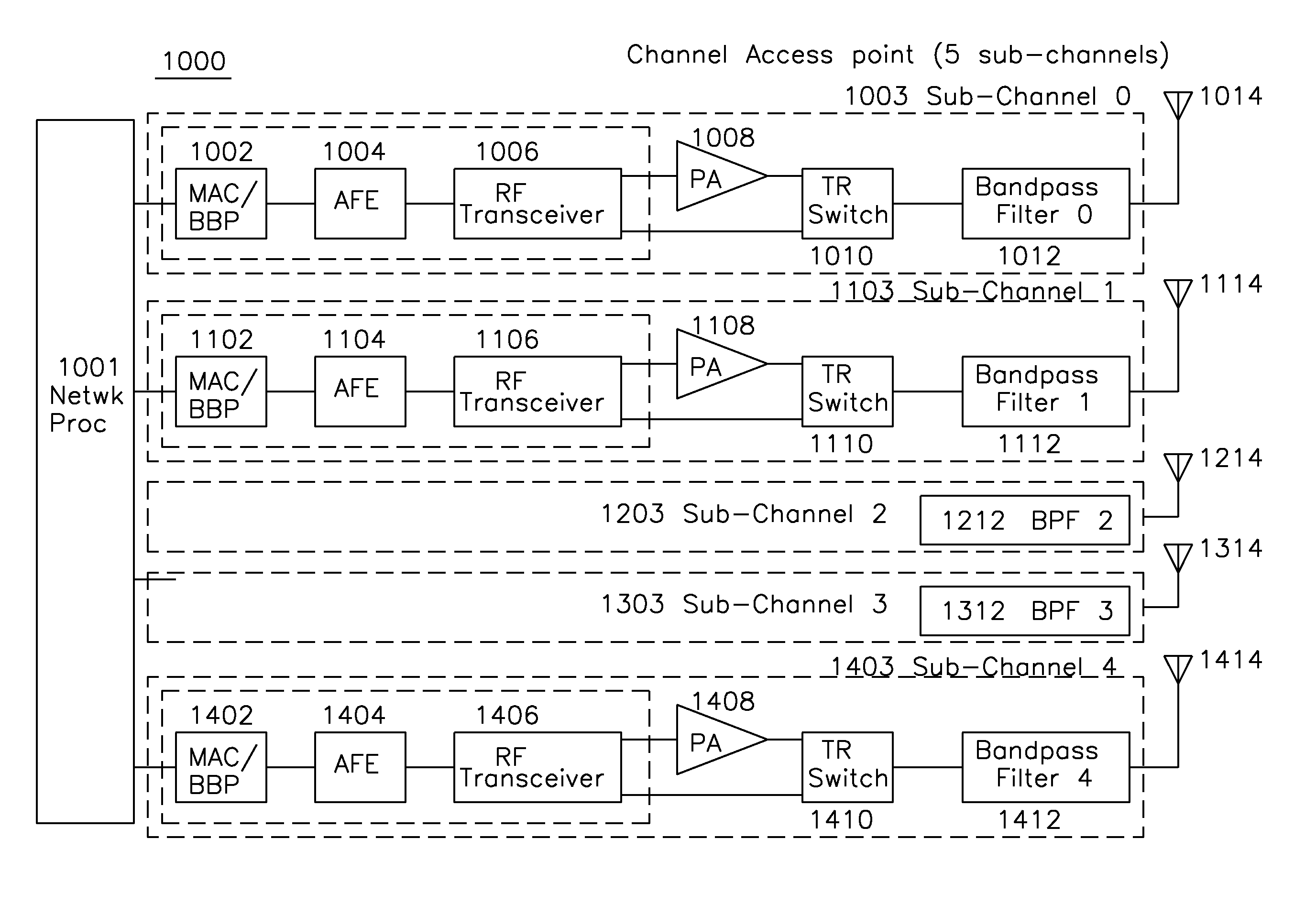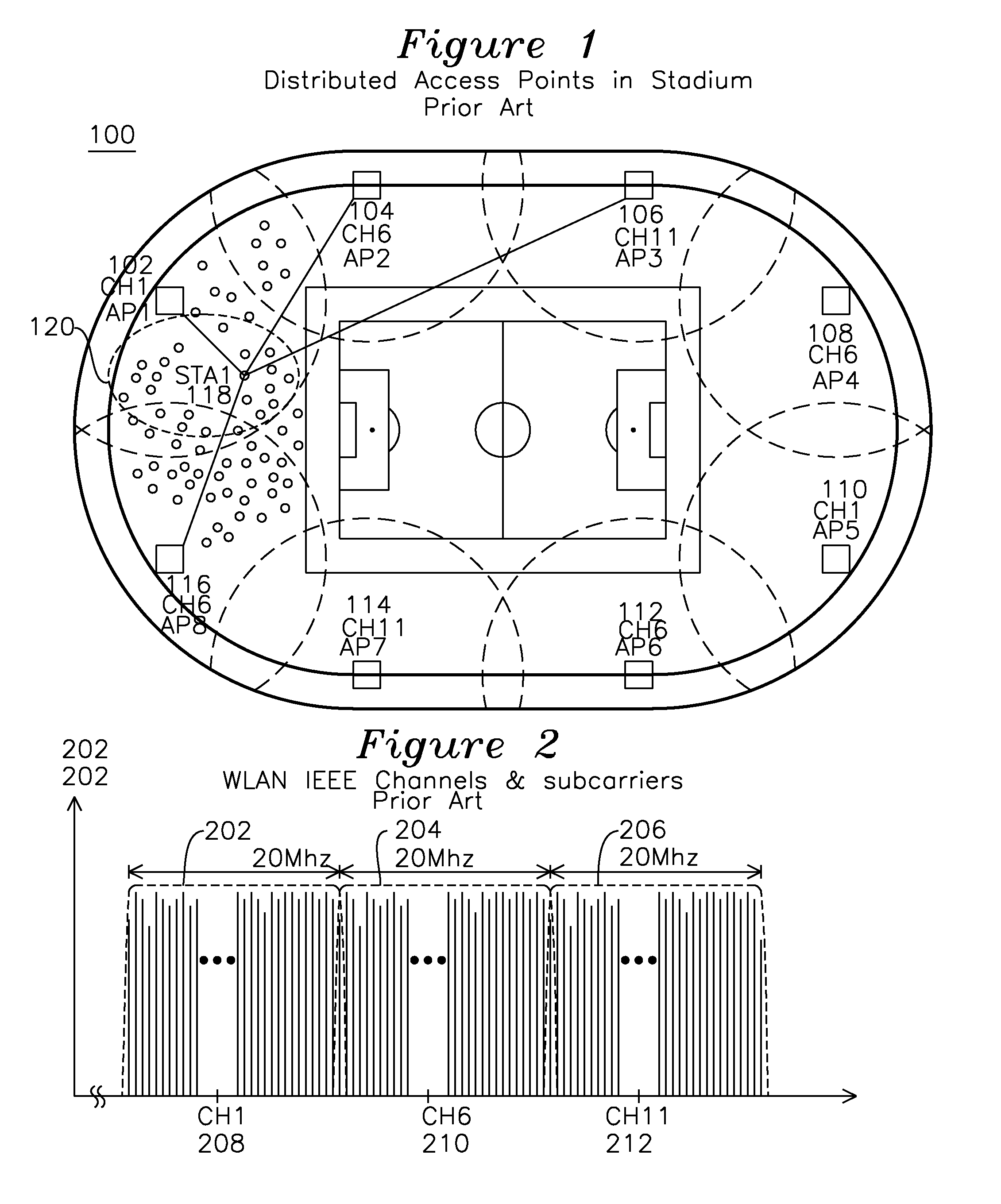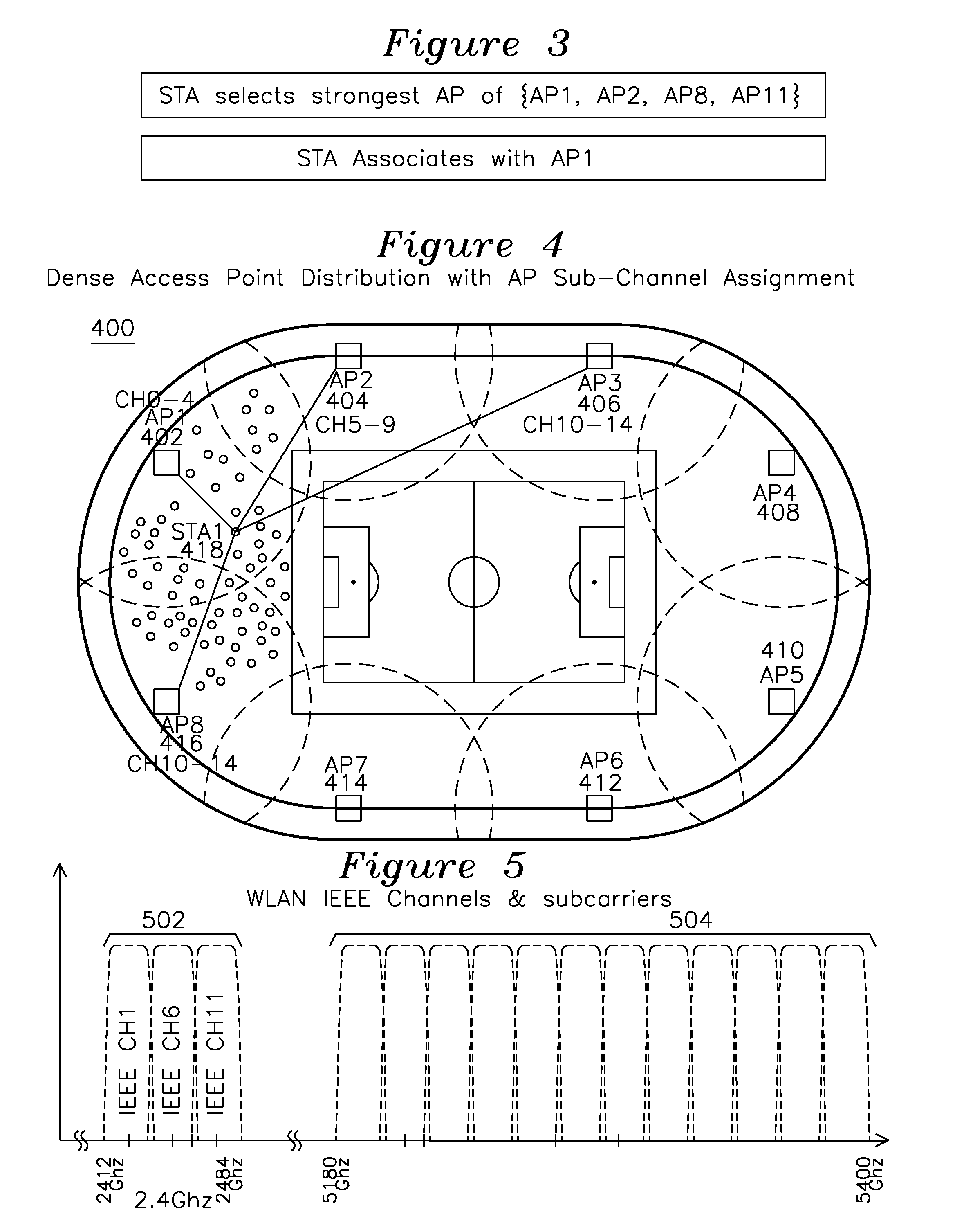Access point processor for a wireless local area network utilizing multiple sub-channels
- Summary
- Abstract
- Description
- Claims
- Application Information
AI Technical Summary
Benefits of technology
Problems solved by technology
Method used
Image
Examples
Embodiment Construction
[0021]FIG. 4 shows a dense access point distribution with sub-channel assignments, which could be done statically by a network user based on AP layout topology, or dynamically or automatically by each AP based on sub-channel selection based on minimum signal level (indicating maximum distance separation) from adjacent APs. In the prior art, a single access point 102 of FIG. 1 would be operative on a single IEEE channel, and the different IEEE channels would be used by the adjacent access points to avoid superposition of subcarriers. For example, as shown in FIG. 2, one access point would use IEEE channel 1 with subcarriers 202 with non-interfering subcarriers 204, or it could use IEEE channel 11 with non-interfering subcarriers 206. In FIG. 4, each access point is operative on a “master channel”, which consists of a plurality of non-interfering “sub-channels” which are distinct from any sub-channel of an adjacent master channel, thereby allowing the simultaneous use of these sub-cha...
PUM
 Login to View More
Login to View More Abstract
Description
Claims
Application Information
 Login to View More
Login to View More - R&D
- Intellectual Property
- Life Sciences
- Materials
- Tech Scout
- Unparalleled Data Quality
- Higher Quality Content
- 60% Fewer Hallucinations
Browse by: Latest US Patents, China's latest patents, Technical Efficacy Thesaurus, Application Domain, Technology Topic, Popular Technical Reports.
© 2025 PatSnap. All rights reserved.Legal|Privacy policy|Modern Slavery Act Transparency Statement|Sitemap|About US| Contact US: help@patsnap.com



